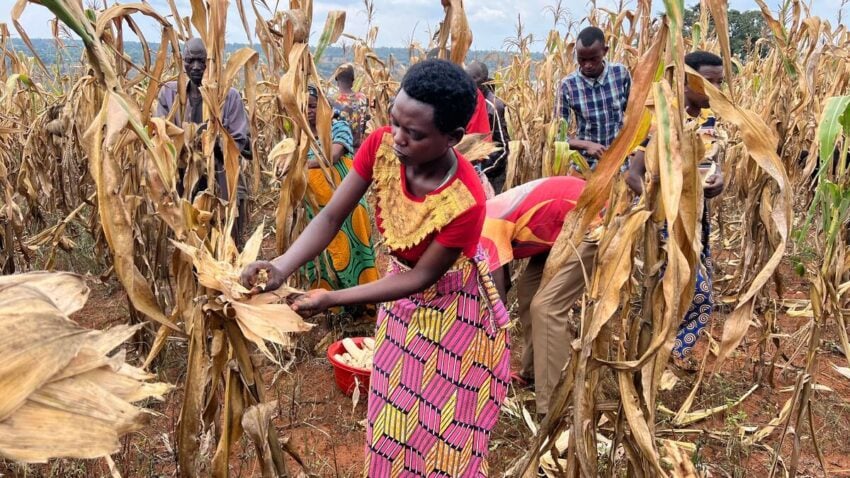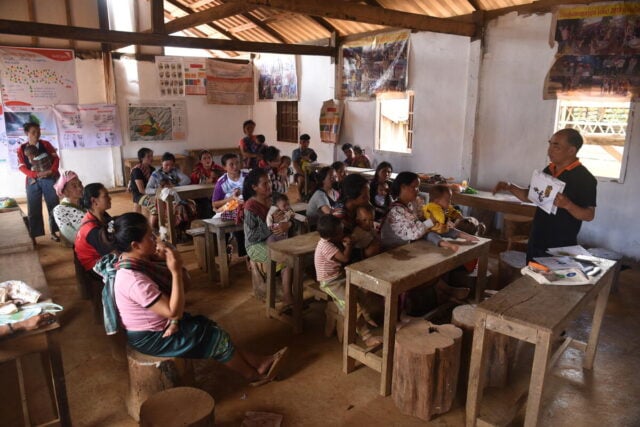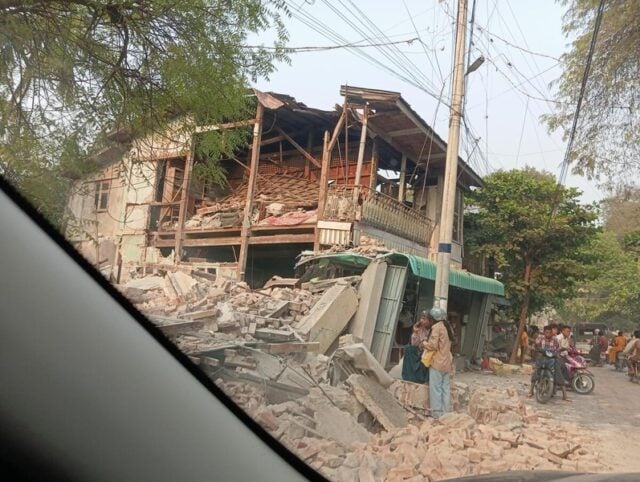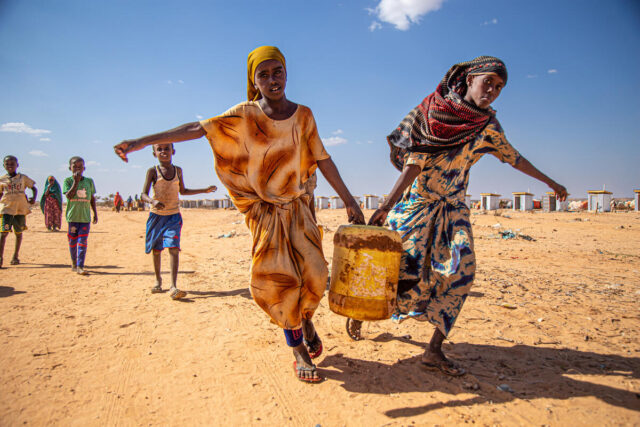Today, an estimated 757 million people — about 1 in 11 worldwide — are facing hunger. In Africa, that figure rises to 1 in 5 people, according to the U.N. agencies’ The State of Food Security and Nutrition in the World 2024 report. Despite global efforts to stop the spread of hunger, progress has stalled, leaving millions of children at risk of malnutrition and preventable diseases.
Where hunger hits hardest
Explore the key questions and critical facts to better understand the causes and impact of the hunger crisis.
- Why is hunger on the rise?
- Regions most affected by hunger
- The world is falling behind on ending hunger by 2030
- How World Vision tackles hunger
- How you can help end world hunger
Why is hunger on the rise?
A combination of crises is setting back decades of progress against hunger:
- Conflict: Wars and instability have displaced millions, cutting off access to food and livelihoods.
- Economic shocks: Rising food prices and job losses have made it harder for families to afford daily meals.
- Climate shocks: Droughts, floods, and extreme weather continue to devastate crops and livestock, driving communities into crisis.
Regions most affected by hunger
Some of the hardest-hit regions where hunger is growing at alarming rates include:
- Middle Africa: 31.8% of the population is undernourished.
- East Africa: 28.1% face hunger daily.
- Western Africa: 18.7% struggle with food insecurity.
- Caribbean: 16.1% are affected by severe hunger.
- Southern Asia: 15.8% face malnutrition risks.
Haiti, Mali, South Sudan, Sudan, and parts of the Middle East region are experiencing catastrophic hunger levels, driven by conflict and economic collapse. Famine conditions have been confirmed in a displacement camp in North Darfur, Sudan, that shelters an estimated 400,000 people.
Learn more about Africa’s hunger crisis and what World Vision is doing to help hungry children and families.
The world is falling behind on ending hunger by 2030
In 2015, world leaders gathered to end hunger by 2030 as part of the U.N.’s Sustainable Development Goals (SDGs), Among these goals is the commitment to eradicate hunger and malnutrition — ensuring those living in poverty and vulnerable situations have access to sufficient and nutritious food year-round.
However, current efforts and progress aren’t enough. At the current rate, 582 million people will still be hungry by the end of this decade.
How World Vision tackles hunger
World Vision is tackling hunger by making sure families have access to nutritious food and sustainable livelihoods. With the support from generous donors and partnerships, we empower communities to break the cycle of hunger and malnutrition. Much of this work is made possible by child sponsorships, as well as government and private grants.
We believe by eliminating poverty, we can end hunger, too. Over the last 15 years, 88% of the severely malnourished children we treated made a full recovery.
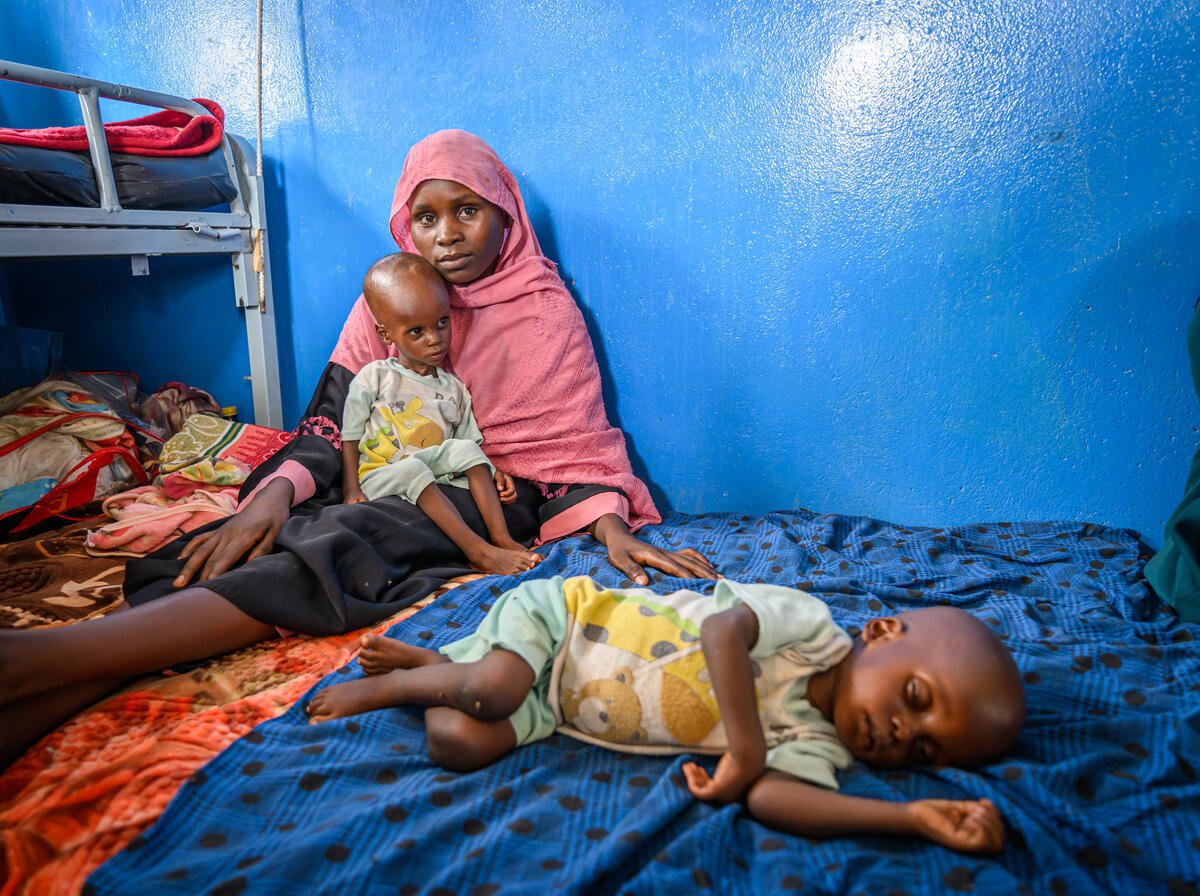
Among the many lives changed is 20-year-old Tahani’s. When conflict forced her to flee Sudan, she carried her malnourished twins, Adam and Adeeb (pictured above), across the border to Chad in search of help. “I faced shooting and people killing people on the road when I started coming,” she said. “Houses and villages were on fire.” By the time they reached Farchana, the boys, then 21 months old, each weighed only 13 pounds.
World Vision connected Tahani and her sons to a nutrition and rehabilitation center, where they accessed lifesaving care. As part of our work, we also helped upgrade the center with a new water system and electricity, improving the center’s ability to treat malnutrition cases. By September 2024, the twins were no longer in a critical state of malnutrition. Now, they’re smiling in their mother’s arms.
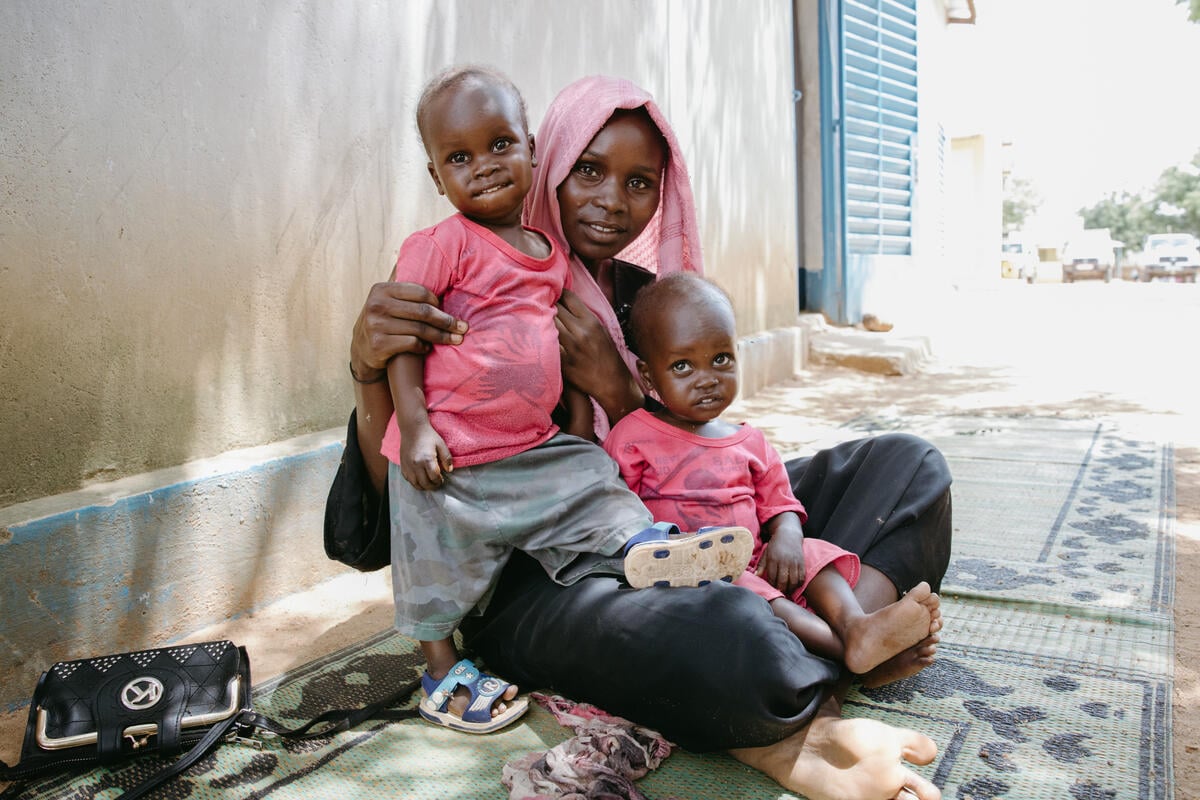
During disasters and food crises, World Vision delivers lifesaving food aid to help people survive their hardest days. We don’t stop there. When the situation improves, we support communities in rebuilding and strengthening their ability to provide food for themselves and their families.
Since many people in developing countries earn a living by farming small plots of land, our programs give them access to agricultural tools — like hardy, drought-resistant seeds — and provide training in crop diversity and rotation techniques, livestock farming, and water retention and irrigation. These improvements help families boost long-term food production and benefit the land by minimizing soil erosion and water loss.
We also help local farm groups join together to store and market their crops. They take advantage of pricing and discounts and eliminate middlemen and product loss.
In addition, our staff teach mothers and fathers about proper nutrition with locally available foods and new preparation techniques, so children are better nourished. Loans and business training help individuals bring their business ideas — such as owning a small store or making furniture — to life, so they can increase their income and thrive.
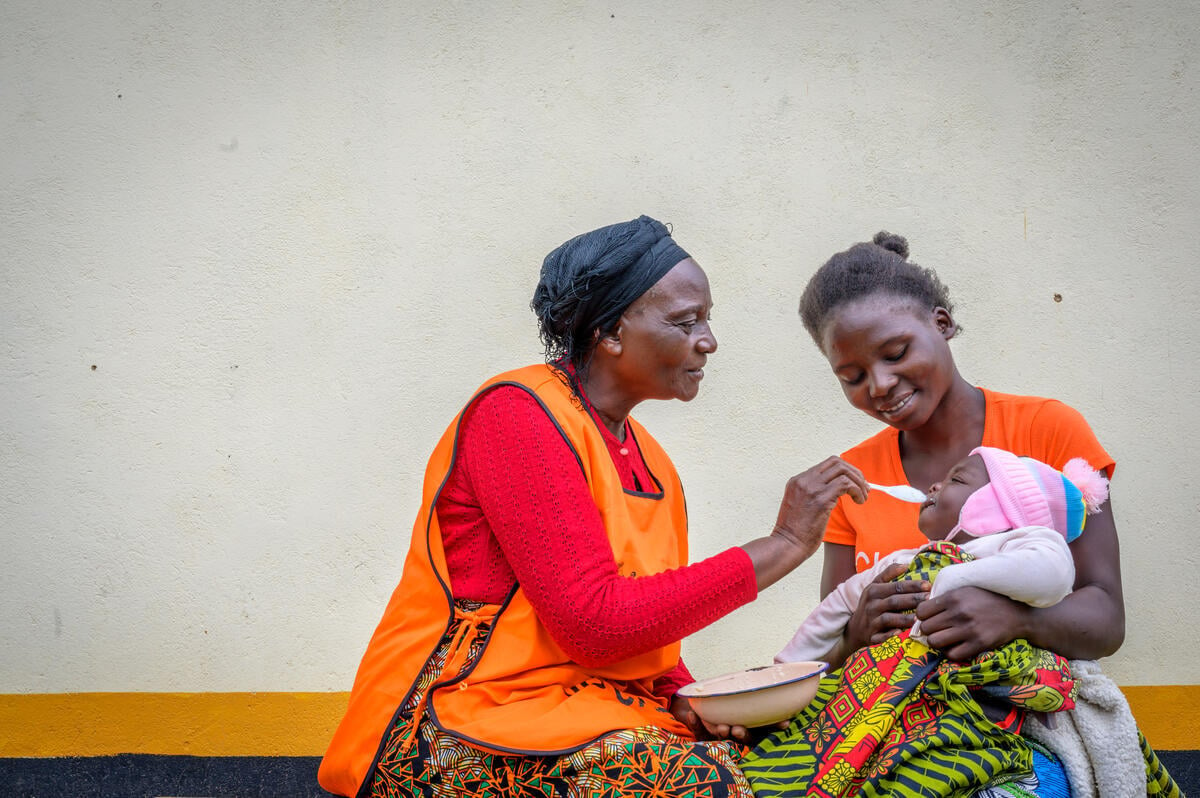
How you can help end world hunger
- Pray for children and families affected by chronic hunger, which has devastating long-term effects. Pray that nutritious food will be readily available for hungry families in these communities and that they can afford to buy or raise it.
- Pray for people in developing countries who are impacted by the COVID-19 pandemic and are facing physical, financial, social, and spiritual hardship.
- Sponsor a child today. Sponsorship is the most powerful way you can fight poverty. When you sponsor a child, you help their family and community gain sustainable access to basics like nutritious food, healthcare, clean water, education, and more. You’ll help change the life of your sponsored child, their family, and their entire community.
- Help provide lifesaving food and care. Your gift will help hungry children and families worldwide get access to essentials like emergency food, agricultural tools and training, clean water, medicines, and more.
